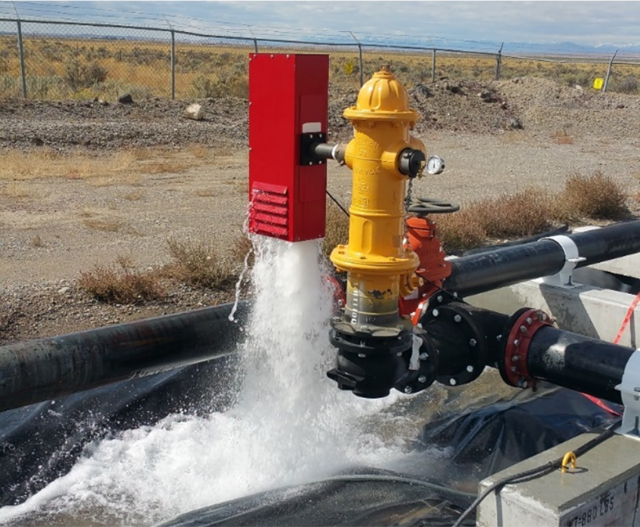Stormwater Management Technologies: Hydrant Flushing & Chlorination
Following contamination of infrastructure, state and local agencies may need to implement control measures to contain or redirect stormwater. EPA is developing and testing technologies to support stormwater management.
Go back to the Stormwater Management Implementation Control Technologies page.
Hydrant Flushing and Chlorination
According to the 2021 Report Card for America’s Infrastructure, there are 2.2 million miles of underground water pipes in the United States. These pipes and the associated network of storage tanks and reservoirs of the distribution system contain billions of gallons of finished water at any given time. Natural disasters such as flooding, hurricanes, earthquakes, etc. can compromise the water quality in large sections of this distribution system water storage. Accidental or intentional contamination events can also render large volumes of water unusable within the distribution system.
Flushing contaminated water out of a drinking water distribution system using an existing network of fire hydrants is considered the most probable first action in response to a drinking water system contamination incident. The existing fire hydrants will have an important role in removing (flushing) contaminated water from the distribution piping. The primary purpose of flushing will be to keep the contaminated water from reaching consumers, but consideration should also be given to where this flushed water will be discharged and what impact it will have on human health and the environment.

If the hydrant is close to a sanitary sewer manhole or drain, the flushed water can be directed to the wastewater treatment plant. However, if the flushed water will be discharged to a storm water drain or swale it may be beneficial and cost effective to treat the water as it is discharged from the hydrants before reaching the environment.
EPA has performed experiments designed to determine the efficacy of removing contaminated water from the water distribution system by flushing the water using hydrant flushing devices. In additional experiments, researchers also tested the ability of a custom-made chlorination diffuser (device used to reduce pressure and discharge flow from a fire hydrant) to add chlorine to the water discharged from the fire hydrant and disinfect biologically contaminated water before it was released to the environment. Several operational best practices were identified by these experiments.
In general, hydrant flushing under the right operating conditions was found to be effective at removing contaminated water from a water distribution system. In addition, the hydrant diffuser was able to add chlorine to water discharged from the fire hydrant.
